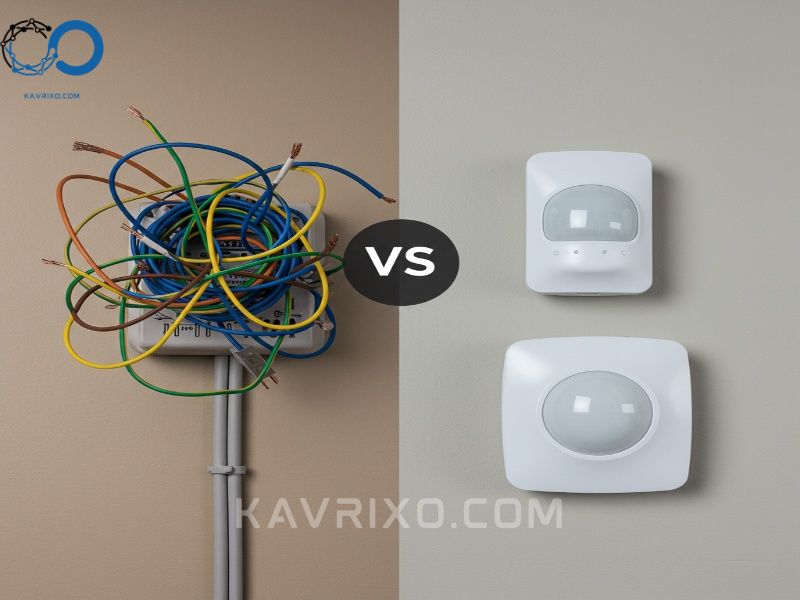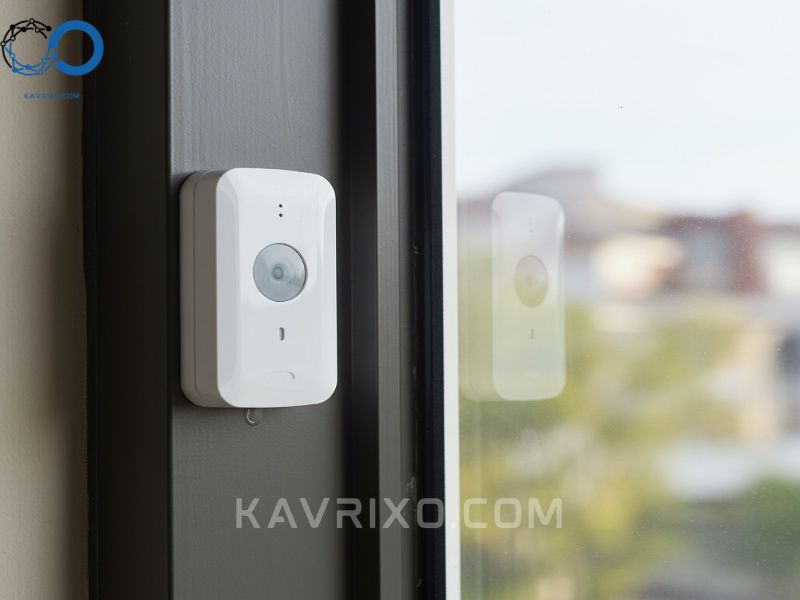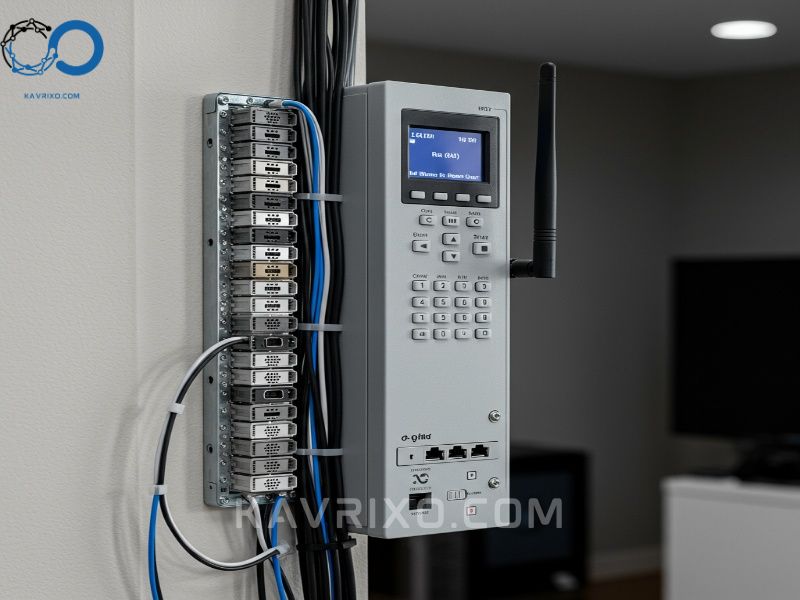Choosing the right security system for your home is one of the most critical decisions a homeowner or renter will face. The technology available today is powerful and sophisticated, yet the fundamental debate remains: should you opt for a wireless alarm system vs wired system?
This is not a simple question of “better” or “worse.” Instead, it is a nuanced comparison based on installation complexity, reliability, cost, and the specific architecture of your property. For decades, wired systems were the gold standard of permanence and reliability, but modern wireless technology has closed the gap significantly, offering flexibility and advanced integration that was once impossible.
In this comprehensive guide, we will dissect the core differences between a security system wired vs wireless setup, examining the technological infrastructure, operational reliability, and long-term costs associated with each, ensuring you have all the facts necessary to make an informed choice that truly safeguards your peace of mind.

Contents
- 1 Understanding the Core Technology: Wired Systems
- 2 Understanding the Core Technology: Wireless Systems
- 3 Direct Comparison: Critical Factors
- 4 Cost Analysis: Initial Investment vs. Lifetime Value
- 5 The Hybrid Solution: Getting the Best of Both Worlds
- 6 Making the Final Decision: Who Should Choose What?
Understanding the Core Technology: Wired Systems
Wired security systems, often referred to as hardwired systems, are the traditional backbone of comprehensive residential and commercial security. These systems rely on physical low-voltage wiring run through the walls, ceilings, and floors of the property to connect every sensor, keypad, and siren directly to a central control panel.
For many years, the assumption was that a wired or wireless alarm system comparison always favored wired systems due to their inherent physical connection, which guaranteed power and signal transmission regardless of battery life or radio frequency interference.
How Wired Systems Function
In a hardwired setup, every component—whether it’s a magnetic contact sensor on a window, a passive infrared (PIR) motion detector, or a smoke alarm—is physically tethered to the main control panel.
- Power: The central panel is connected to the home’s main power supply (AC), and this power is distributed via the wiring to all connected sensors. A backup battery within the control panel ensures functionality during a power outage.
- Communication: Signals travel instantly and reliably along the copper wiring. When a sensor is triggered, the electrical circuit is broken or completed, sending a direct signal to the control panel, which then initiates the alarm sequence (siren, notification to monitoring center).
- Installation: Installation requires significant effort, often necessitating drilling, fishing wires through wall cavities (a process known as ‘running cable’), and meticulous termination at both the sensor and the panel.
Key Advantages of Wired Security Systems
The primary appeal of choosing a hardwired solution in the debate of wired versus wireless home security systems stems from its foundational stability:
1. Unmatched Reliability and Durability
Since sensors draw constant, low-voltage power directly from the main panel, battery failure is eliminated as a point of vulnerability for individual sensors. This dedicated, physical communication pathway is less susceptible to radio frequency (RF) interference or signal jamming, offering maximum signal integrity. Hardwired systems are often built with commercial-grade components designed for longevity, typically lasting 15 to 20 years or more with minimal degradation.
2. Hidden Infrastructure
Once installed, the wiring is completely concealed within the structure of the building. This provides a clean aesthetic, free of visible wires or bulky external components. In addition to appearance, hidden wiring is difficult for intruders to tamper with unless they know precisely where to cut the lines—a factor that often deters opportunistic theft.
3. Lower Long-Term Maintenance Costs
While the initial installation cost is high, the recurring maintenance expense is remarkably low. There are no sensor batteries to replace annually or bi-annually. The main maintenance tasks typically involve testing the central panel’s backup battery every few years and ensuring the system is periodically tested.
Significant Disadvantages of Wired Systems
While reliability is paramount, the rigid nature of wired systems presents several major drawbacks that often steer modern consumers toward the wireless alternative.
1. Highly Invasive and Complex Installation
The greatest hurdle is the installation process. In existing homes, especially those with finished walls, installing a wired system is highly invasive. It requires opening up walls, running conduit, and patching drywall, significantly increasing labor time and cost. This makes hardwired systems impractical for renters or those living in properties where structural modifications are restricted.

2. Lack of Flexibility and Scalability
Once the wiring is laid, expanding the system is difficult and costly. If you decide to add a new sensor in a location not initially wired (e.g., securing a new addition or a detached garage), you face the same invasive installation process all over again. The system’s layout is essentially fixed.
3. Dependence on Physical Location
Wired systems limit where sensors can be placed based on accessibility for running cables. This contrasts sharply with the freedom offered by wireless sensors, which can be affixed virtually anywhere they are needed, including far corners of a property or structures distant from the main panel.
Understanding the Core Technology: Wireless Systems
Modern wireless security systems utilize radio frequencies (RF), Wi-Fi, and cellular technology to connect sensors and components to the control panel without relying on physical data cables. This shift has revolutionized the market, making high-level security accessible to almost anyone, regardless of property type or technical skill.
When evaluating a wired or wireless security system, the wireless option almost always wins on convenience, speed of installation, and integration capabilities.
How Wireless Systems Function
Wireless systems operate on a decentralized model, communicating through encrypted signals.
- Power: Individual sensors (door/window contacts, motion detectors, glass break sensors) are powered by long-life batteries (typically lithium or proprietary cells that last 2–5 years). The main control panel and keypads usually plug into AC power, with battery backup.
- Communication: Components communicate with the central hub using encrypted wireless protocols (like Z-Wave, Zigbee, or proprietary RF). When a sensor is triggered, it transmits a digital packet of data instantly to the hub.
- Installation: Installation is often DIY-friendly. Sensors are mounted using adhesive strips or a few small screws. No drilling or specialized wiring knowledge is required, drastically reducing labor costs and time.
Key Advantages of Wireless Security Systems
The debate over wireless alarm system vs wired often concludes with wireless leading in terms of adaptability and ease of use:
1. Simple, Non-Invasive Installation
The primary benefit of wireless systems is the incredibly fast and clean installation process. They require no drilling or running of wires, making them ideal for apartments, rental properties, historic homes, or houses constructed with challenging materials like concrete or brick where running cables is prohibitive. This ease makes professional installation quicker and cheaper, or allows homeowners to easily install the system themselves.
2. Superior Flexibility and Portability
Wireless systems are modular and highly scalable. Adding a new sensor or relocating existing ones is as simple as pairing the device with the control panel and mounting it. If you move, the entire system can often be taken down and reinstalled in your new home, providing exceptional long-term value that a fixed wired system cannot match.

3. Seamless Integration with Smart Home Ecosystems
Modern wireless hubs are designed to be the central nervous system of a smart home. They integrate effortlessly with devices like smart locks, video doorbells, smart thermostats, and lighting systems, often controlled via a single mobile application. This level of automation and remote control far surpasses the capabilities of most traditional hardwired systems.
Significant Disadvantages of Wireless Systems
While highly convenient, wireless technology introduces potential vulnerabilities related to power and communication stability.
1. Reliance on Batteries
Every wireless component requires periodic battery replacement. If maintenance is neglected, sensors can fail silently, leaving points of entry unprotected. While systems usually alert the user when batteries are low, this adds an ongoing recurring cost and maintenance requirement that hardwired systems avoid.
2. Potential for Signal Interference and Jamming
Wireless signals operate on specific radio frequencies. While modern systems use frequency hopping and encryption to mitigate risks, sophisticated intruders or even common household devices (like poorly shielded baby monitors or powerful routers) can potentially interfere with the signal transmission. Furthermore, intentional radio jamming, though difficult and illegal, remains a theoretical vulnerability for purely wireless setups.
3. Range Limitations
In very large homes, sprawling estates, or properties with thick concrete or metal construction, the range of the wireless signal can be a limiting factor. Repeaters or mesh networks might be needed to ensure reliable communication with distant sensors, adding complexity and cost.
Direct Comparison: Critical Factors
When weighing the decision between a wired vs wireless home security system, the choice often boils down to five critical operational factors that impact daily life and long-term security posture.
Installation and Scalability (DIY vs. Professional)
| Feature | Wired Alarm System | Wireless Alarm System |
| Installation | Professional required; highly invasive; extensive labor. | Often DIY-friendly; non-invasive; simple mounting. |
| Scalability | Low; adding components is costly and structural. | High; components can be added or moved easily at any time. |
| Ideal For | New construction where wiring is planned before drywall. | Existing homes, renters, and modular properties. |
For most existing homeowners, the sheer cost and disruption associated with running wires make the wireless alarm system vs wired argument strongly favor the wireless option.
Reliability and Signal Integrity (The “Cut the Wire” Myth vs. Jamming)
The core reliability debate pits physical security against digital encryption.
Wired Reliability: The Physical Vulnerability
A wired system is incredibly robust against electronic interference. However, its major vulnerability is physical access to the wires or the phone line (if used for monitoring communication). An intruder who manages to cut the external phone line or locate and snip the low-voltage wires connecting sensors to the panel can instantly disable parts of the system before the alarm is triggered.
Wireless Reliability: The Digital Vulnerability
Modern wireless systems overcome many initial reliability concerns. They use cellular backup (4G/5G) instead of landlines, meaning cutting a wire outside the house is irrelevant. They also use advanced encryption (like AES 128-bit) to prevent digital eavesdropping. The primary threat remains signal jamming. While professional-grade jammers are expensive, a determined intruder could theoretically block the RF signal between the sensor and the panel. However, high-quality wireless systems often incorporate anti-jamming measures and instant monitoring alerts if communication is suddenly lost.

Maintenance and Ongoing Costs (Batteries vs. Infrastructure)
Maintenance is where the long-term cost differences truly emerge in the wired or wireless alarm system debate.
- Wired Systems: Maintenance is minimal. Costs are focused on occasional replacement of the control panel backup battery (every 3–5 years) and potential repair of physical wiring damage (e.g., pests chewing cables).
- Wireless Systems: Maintenance is mandatory and constant. The homeowner or renter must manage dozens of individual sensor batteries. While inexpensive individually, the cumulative cost and time investment can be significant over a decade.
System Integration and Smart Home Compatibility
This area is a clear win for wireless technology. Hardwired systems, particularly older generations, often struggle to interface seamlessly with modern smart home protocols like Amazon Alexa, Google Home, or Apple HomeKit.
Wireless systems are built on these protocols. They natively integrate security sensors with cameras, lighting, thermostats, and access control, allowing for complex automation rules (e.g., “If the security system is disarmed, unlock the smart door and turn on the living room lights”). This enhanced functionality provides greater convenience and utility beyond pure security.
Aesthetic Impact and Property Value
Aesthetic preference often plays a role in the decision.
- Wired: Offers the cleanest look since wires are hidden, preserving the interior design of the property. For high-end luxury homes or structures requiring historical preservation, this clean installation is often preferred.
- Wireless: While modern sensors are small and sleek, they are visible. Furthermore, in the event of a move, a wired system is considered a permanent fixture, potentially adding modest value to the property, whereas a wireless system is typically removed by the seller.
Cost Analysis: Initial Investment vs. Lifetime Value
The total cost of ownership (TCO) for a wireless alarm system vs wired setup involves more than just the price tag of the equipment. It encompasses labor, maintenance, and monitoring fees over the life of the system.
Initial Hardware and Labor Costs
Wired System Costs
Wired systems typically require a higher upfront investment. While the sensor hardware itself might be slightly cheaper per unit than proprietary wireless components, the overwhelming cost driver is installation labor. Professional installation for a standard three-bedroom home can easily push the initial cost into the thousands, especially if retrofitting an existing building.
- Initial Cost: High (Due to intensive labor).
- Hardware: Moderate (Commercial grade, robust panel).
Wireless System Costs
Wireless systems have lower installation costs (often zero if DIY), but the hardware itself—which includes encrypted transmitters, batteries, and sophisticated wireless chips in every sensor—can be pricier than simple wired contacts. However, the overall initial outlay is significantly lower due to the minimal labor requirement.
- Initial Cost: Low to Moderate (Minimal labor).
- Hardware: Moderate to High (Proprietary wireless components).
Monitoring and Subscription Fees
Both security system wired vs wireless options typically require a subscription for professional monitoring (alerts sent to a central station). However, the communication method can affect the monthly cost.
- Wired Systems (Traditional): Often relied on landlines (POTS), which are becoming obsolete and are slow. Modern wired systems require a cellular communication module (a necessary upgrade) to ensure reliable, fast communication with the monitoring center, adding to the cost.
- Wireless Systems: Almost universally use cellular (GSM/LTE/5G) communicators by default. This is generally considered the safest and fastest way to transmit alarm data, but the cellular service fee is built into the monthly monitoring rate.
Long-Term ROI and Durability
If you are building a new, custom home and plan to stay for twenty years or more, the durability and low long-term maintenance of a wired system can offer a better ROI despite the massive initial investment.
However, for the average homeowner (who moves every 7–10 years) or anyone in an existing structure, the portability, flexibility, and significantly lower initial cost of a wireless system provide superior ROI and greater adaptability to changing technological standards.
The Hybrid Solution: Getting the Best of Both Worlds
For many properties, the decision doesn’t have to be a rigid choice between a wired versus wireless home security systems solution. Modern technology has enabled powerful hybrid systems that combine the best attributes of both types.
A hybrid system often centers around a main control panel that is capable of receiving signals via both hardwired zones and wireless transmitters. This allows homeowners to leverage existing infrastructure while enjoying modern flexibility.
When a Hybrid Approach Makes Sense
A hybrid system is perfect for two primary scenarios:
- Homes with Existing Wiring: If your home already has old, functional wiring for perimeter contacts (doors and windows), you can keep those reliable hardwired sensors connected to the hybrid panel. You can then use wireless components for areas where running wire is impractical, such as detached garages, sunrooms, or for specialized devices like wireless cameras and smart locks.
- Large Properties Requiring Redundancy: In mansions or commercial settings, the security strategy may demand the absolute reliability of hardwired sensors on key access points, while utilizing the flexibility of wireless motion detectors or outdoor beam sensors that are far from the main panel.
Practical Applications of Hybrid Systems
A common hybrid implementation involves:
- Wired: Perimeter protection (main floor doors and windows), high-traffic motion detectors, and fire/CO alarms (where codes often mandate hardwiring).
- Wireless: Keypads, remote panic buttons, flood sensors in basements, and any smart home devices (like smart lighting controls).

Making the Final Decision: Who Should Choose What?
The ultimate choice for a wired or wireless security system depends entirely on your property, budget, risk profile, and long-term goals.
Recommendations for Existing Homes and Renters
If your home is already built and finished, or if you are renting, the answer is usually clear: Go Wireless.
The wireless option provides:
* Minimal Disruption: No need for drywall repair or extensive labor.
* Portability: You can take the system with you when you move.
* Speed: Installation takes hours, not days.
* Smart Integration: Instant access to the latest smart home features and mobile control.
Wireless systems offer excellent security protection that is fast to deploy and highly adaptable.
Recommendations for New Construction and Large Properties
If you are planning a home renovation or building a brand-new home from the ground up, you have the opportunity to plan the infrastructure optimally. In this scenario, running wires is cost-effective because the walls are open.
- New Construction (Focus on Longevity): Plan for a Wired or Hybrid system. Install low-voltage wiring for all critical perimeter sensors while the studs are exposed. This minimizes lifetime maintenance and maximizes reliability for core protection.
- Very Large or High-Value Properties: A Hybrid system is almost always the superior choice. Use hardwired connections for critical entry points and central components, and supplement with wireless sensors for internal motion detection, environmental monitoring, and detached structures.
The key takeaway is that while wired systems guarantee physical reliability, modern wireless systems guarantee convenience, flexibility, and rapidly improving digital reliability. For the vast majority of consumers today, a high-quality wireless system or a versatile hybrid system provides the best blend of protection and usability.

